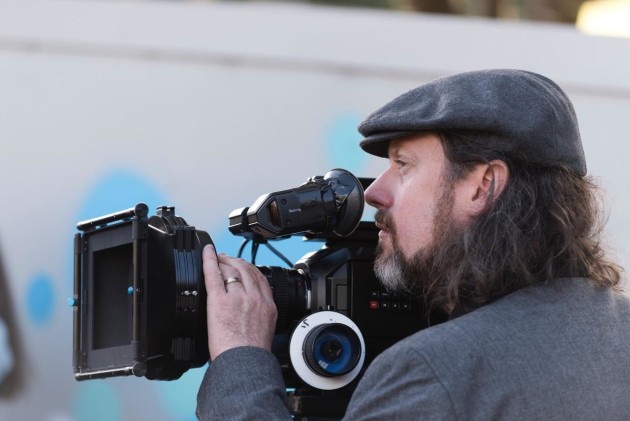10 Pro Tips For Compelling Video
Whatever else you want your images to be, the first thing is that they need to be is compelling. We all want our intended audience to be glued to the screen, unable to look away. In thousands of projects over more than 20 years as a cinematographer, these have become my go-to techniques to make sure that happens.

1. Walk the space
You would be amazed at the proportion of images that are shot from an angle closest to the entry to the space. Whether it’s interviews, commercials, or drama, people are subconsciously biased towards the first angle they see. Instead of getting caught by this, walk around the space and look for different camera angles, places to hide lights, or interesting backgrounds to make part of your coverage. When possible, I also like to get down low and up high to make sure I’ve considered all of the possibilities.
2. Know your gear
More than just knowing how to turn the camera on and set your recording format, really getting to know your camera means learning through trial and error how it responds to different situations. How does it look when you under- or over-expose the image and then correct back in post? How does it look at maximum ISO or minimum ISO? For a while now my weapons of choice have been the Blackmagic URSA Mini 4.6k and URSA Mini Pro. In most situations I’m pretty confident now of what the pictures will look like before I even turn the cameras on and this creates a huge advantage in efficiency and creative freedom. The same applies to lenses and lights.

3. Shoot with the edit in mind
As someone who has also edited a lot, I’m always conscious that having a few great shots doesn’t mean much if they don’t cut together. Making sure you have the shots that will be needed to piece together the basic structure of whatever story you’re telling and then those precious extra shots that mean the editor has room to be creative with the cut as well as slotting it together. If your work is being cut together by a good editor, they’ll love the extra options, and if you’re cutting your own work you appreciate it all the more!
4. If you want to understand lighting, look at Rembrandt.
By the time of the Dutch Masters, most of the lighting techniques we use today had been figured out. Of course they only had natural sources and had to capture them with paint, but the creative techniques and ideas were all there. The absolute master of the masters was Rembrandt. Look at his paintings and try to recreate the lighting with whatever lights you have. Just like for Rembrandt, a window is often the perfect softlight. It will blow your mind how quickly it all makes sense.

5. Put the key light and camera on opposite sides of the subject’s face.
All creative rules are made to be broken, but if you want classically good lighting then doing this will mean that the camera is seeing the shadow side of the face and therefore giving the audience the full 3-dimensionality of the lighting on the face. You can then control how dramatic the look is by moving the key light further away or closer to the eye-line to control how big the shadows are and change the intensity of the fill light to control how light or dark those shadows are. With modern cameras and lenses that capture great pictures in low light, lighting is mostly about creating beautiful shadows.
6. Keep your exposures consistent.
It’s great if you can set perfect exposure. However, colour grading tools like DaVinci Resolve are so powerful and readily available now that if you are a little bit over or a little bit under, it’s not the end of the world. But, if you’re a little over on one shot and a little under on the next then they will never match as well as they could. So even if you’re not 100% sure your exposure is right, it’s usually better to stick with it to complete the sequence and then the shots will correct better together. Note that I’m talking about exposure, NOT iris or aperture, which might need to be different to maintain consistent exposure. Learning to use an incident light meter is a great tool for developing these skills to high level of precision.
7. If you want to understand composition, look at Robert Frank.
Frank’s iconic book, The Americans has been used as a visual reference for so many of the most visually outstanding films, and for very good reason. The photos taken while travelling around America during the 1950s are powerfully evocative, and his framing, backgrounds, and angles are simultaneously unexpected and inevitable. While the subjects and aspect ratios mean the actual compositions don’t usually translate directly to moving pictures, the style and techniques are a rich source of inspiration for many successful cinematographers and directors.
8. Don’t be afraid to use big close ups.
A big close up is a powerful thing. It allows the audience to connect with the subject in a very intense way by using all of the subconscious cues that humans rely on all the time. But don’t use too many, or it can cheapen the technique and look like an old soap opera!

9. Move the camera when the subject is moving.
You can get away with almost ANY camera movement if it is following your subject. Really. Honestly. Go crazy with that pan-handle in order to keep up with your subject’s movements, whether it’s an interview or drama or whatever. Once it’s edited, the audience will never notice. And here’s the trick – once they stop moving, the camera has to stop as well. If you smoothly and gently stop moving the moment your subject does it, the audience isn’t conscious of the camera movement. They only notice that the subject has moved, and if you do it right, you’ll have a well framed shot all the time, rather than a subject moving around to awkward parts of a pre-set frame. This does take a lot of concentration though, so be ready to focus (if you’ll excuse the pun).
10. Everything begins with the eyes.
Lighting, Composition, Camera Movement… everything. Start by thinking about the eyes. Make them right and work your way out from there. No matter how big the scene is, you just keep working your way out from there. Whether it’s an interview for a corporate video or a Lawrence of Arabia remake, just work out how to get the right amount of light in the eyes, create some nice shadows, give them looking room, follow them, etc. Then, look at the nose and the cheeks. Then the forehead and the mouth. And so on, and so on. The techniques that matter most are what you develop when you’re shooting one person’s close-up. Everything else is mainly a matter of scaling up! And if there’s no person in your scene? The headlights of a car or the windows of a house, there’s almost always something that triggers the part of our brains that looks for faces which can stand in for actual eyes. Make them work and you’re on your way.
Once you’re comfortable with these 10 ideas, even the most complex shoot becomes much less daunting, and a world of possibilities opens up for every shot.

About Ben Allan
Ben Allan is producer and cinematographer at Main Course Films based in New South Wales. The youngest person to ever be accredited by the Australian Cinematographer's Society, he has accumulated over 1,500 TV commercials credits and multiple awards as Director of Photography for projects including Sexy Thing, which screened in the Official Selection at the Cannes Film Festival. Some of his other credits and accolades can be seen at this link.

